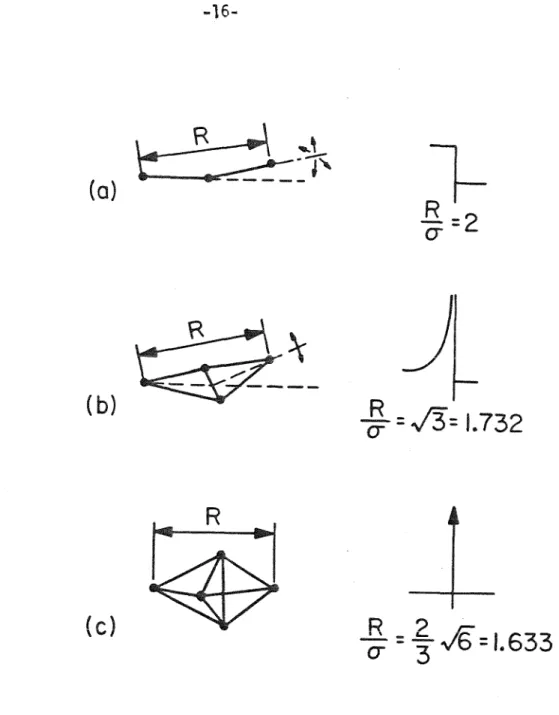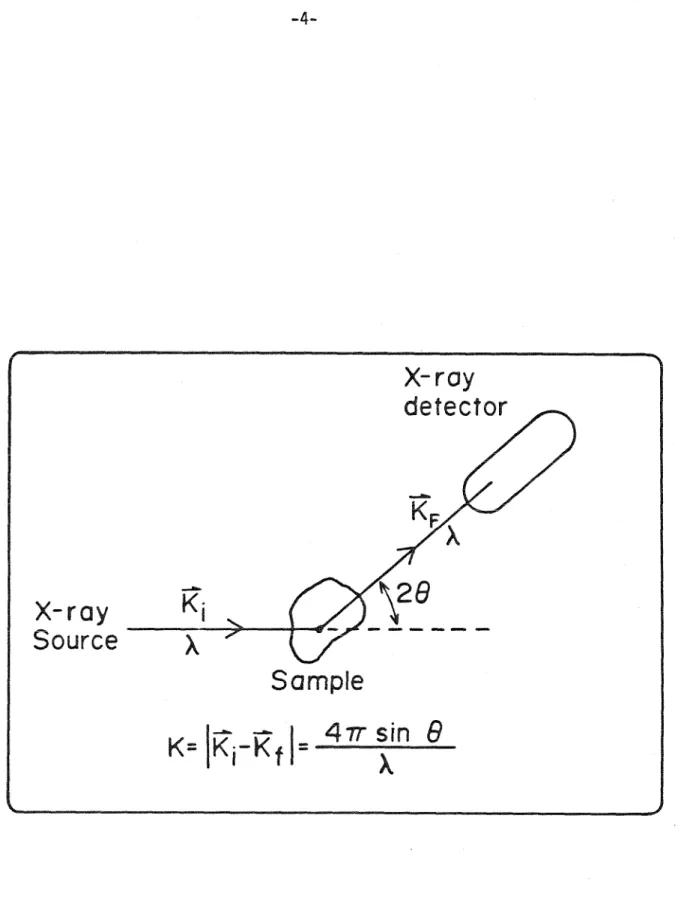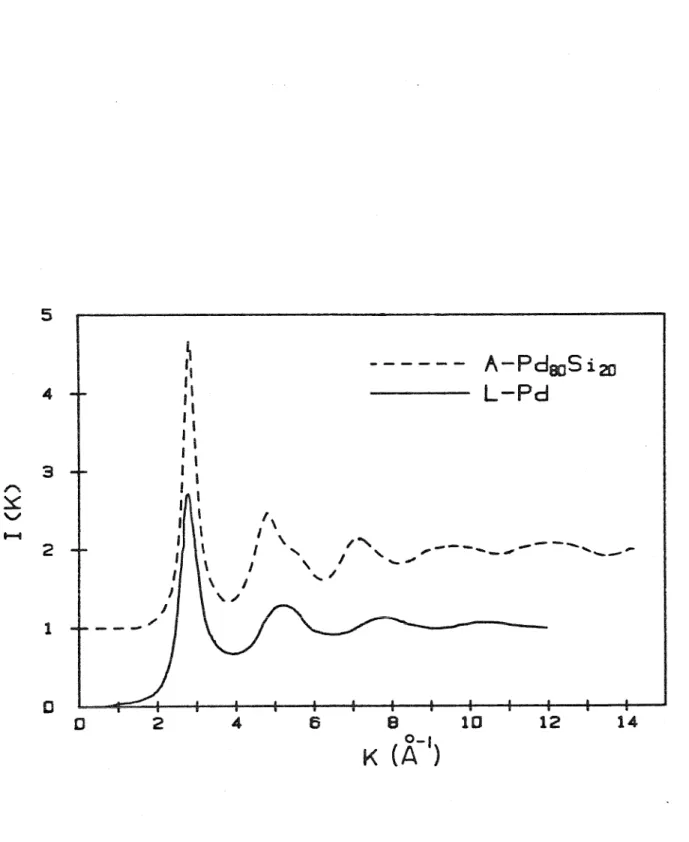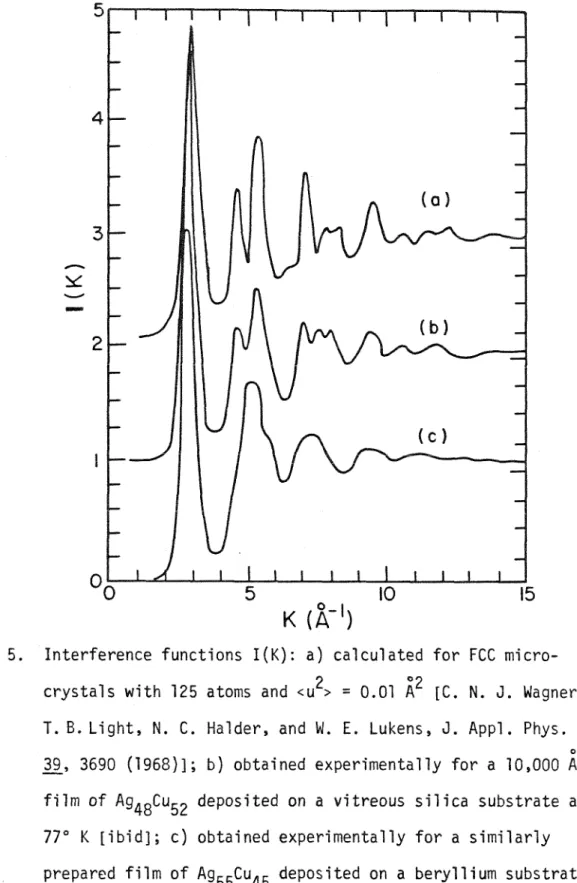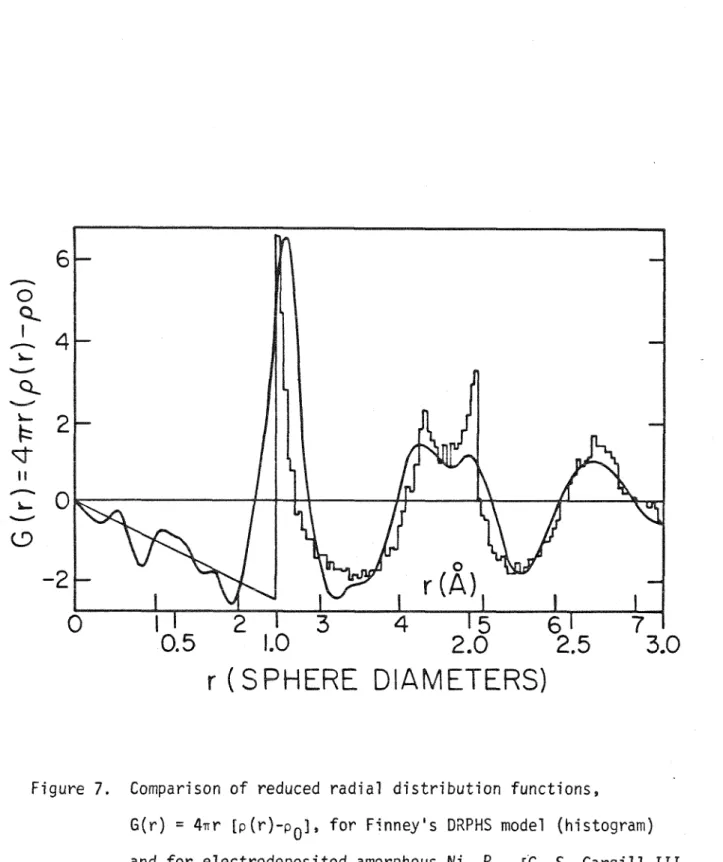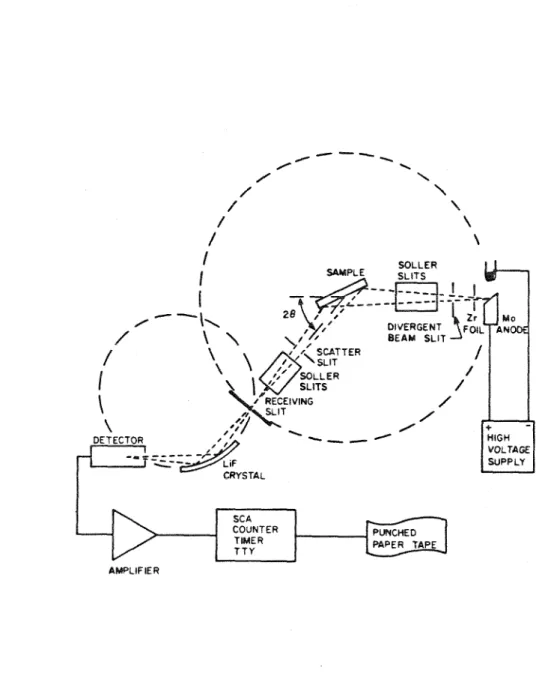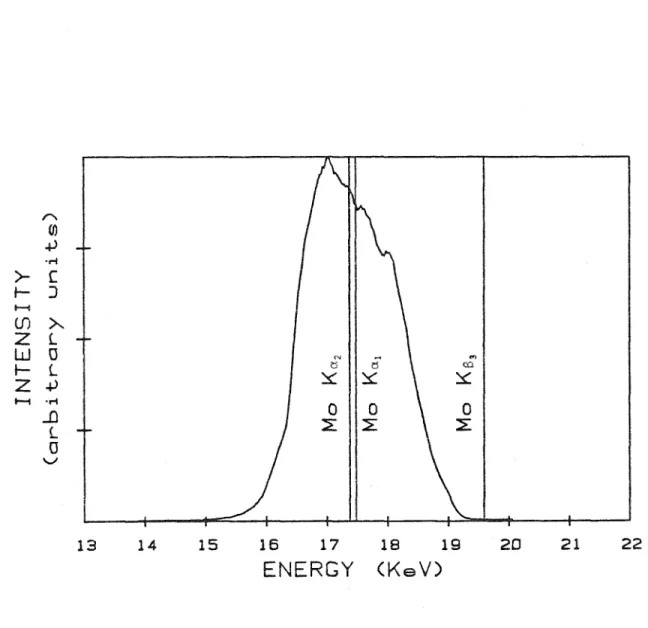I would like to acknowledge the patient support of Professor William Johnson and Professor Paul Duwez for enabling me to carry out this research and for introducing me to the exciting field of amorphous metals. It is the sincere wish of the whole team at Keck Lab that he recovers quickly and can return to the group soon. Current dense random packing models were found to bear only a superficial resemblance to the structure of true amorphous metal alloys, and a theoretical density for amorphous transition metals was obtained that could be used as a filter for more realistic one-component models in the future. .
Partial pair distribution functions for individual pairs of atomic species have been obtained for glass alloys of lanthanum with aluminum, gallium, and gold through the use of isomorphic alloys. Atomic density and the first, second, and third maxima in the atomic density function p(r) for the 12 lanthanum-based metallic glasses. Comparison of reduced radial distribution functions, G(r) = 4nr[p(r)-p . 0], for the DRPHS Finney1s model {histogram) and for the electro-.
0] of four W-Ru-based metallic glasses obtained from X-ray data and using a convergence factor of exp(-0.005 K2). 4nr [pla-La(r) - CLaPoJ calculated from four different data sets on metallic glasses with 72 atomic percent lanthanum and using a convergence factor of exp(-0.005 K2).
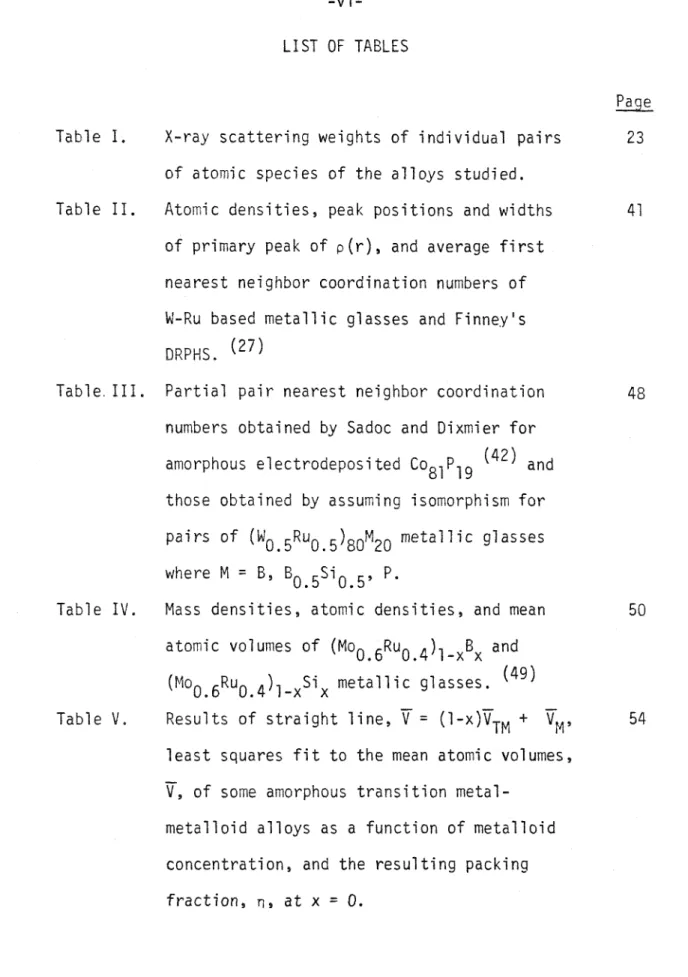
INTRODUCTION
To date, the bulk of experimental investigations of the atomic-scale structure of metallic glasses, (i.e., metallic alloys amorphously quenched from the liquid melt), have been the result of X-ray diffraction experiments. Only a very thin layer of the surface will be detectable anyway due to the short mean free path. tens of Angstroms) electrons in metals, and oxidation, gas inclusions and other surface irregularities can make such an observation unrepresentative of the bulk material. Neutron diffraction experiments suffer from the opposite problem of a very long mean free path. millimeters) for neutrons in the material.
Therefore, relatively large samples (several grams) are required and were generally not available, limiting early experiments to the bulk of materials that can be electrolytically deposited in a bulk amorphous state such as Co-P . B) With the development of reliable long-term production methods. strips of high-quality metallic glasses, however, neutron diffraction experiments are becoming more popular. The recent availability of synchrotron radiation sources and the rapid development of extended X-ray absorption fine structure techniques has inspired the use of EXAFS to study some metallic glasses. A typical experimental setup for X-ray diffraction as shown in figure (l) measures the radiation intensity profile of some known energy distribution from a sample as a function of momentum transfer K.
The ratio of scattered to incident amplitudes for a single free atom is called the atomic form factor f(k). For K>O, jf(k)!2 decreases monotonically due to interference effects between individual electrons, which is a consequence of the fact that the dimensions of the spatial distribution.
In the case of neutron scattering, where it is the nucleus and not the electrons that does. The total intensity of elastically scattered radiation from a homogeneous isotropic substance containing n different atomic species and N atoms is the square of the modulus of the total amplitude and is given by the well-known (ll-l 5) expression. where Ci and f i are the fractional concentration and atomic form factor of element i, and p is the bulk atomic density of the material. r) is the average atomic density of j atoms of type a. However, it is quite obvious that the extraction of real spatial functions P;j(r) is not straightforward when.
The function G(r) is therefore a linear combination of the n2 individual pair density functions, with weight approximately proportional to c1cjzizj' the product of concentrations and atomic numbers. Figure (2) of the weighting functions Wij(K) also shows that most of the remaining 10% is the result of Pd-Si scattering with Si-Si scattering accounting for less than one percent of the total. 80s;20 to that of the liquid transition metal (figures (3) and (4)) show sharper and more extended features for the metallic glass, suggesting that significantly more short-range order exists in the amorphous metal alloy than in the liquid metal .
The density of glass alloys is higher than that of liquid alloy, being usually only one or two percent lower than that of alloy.
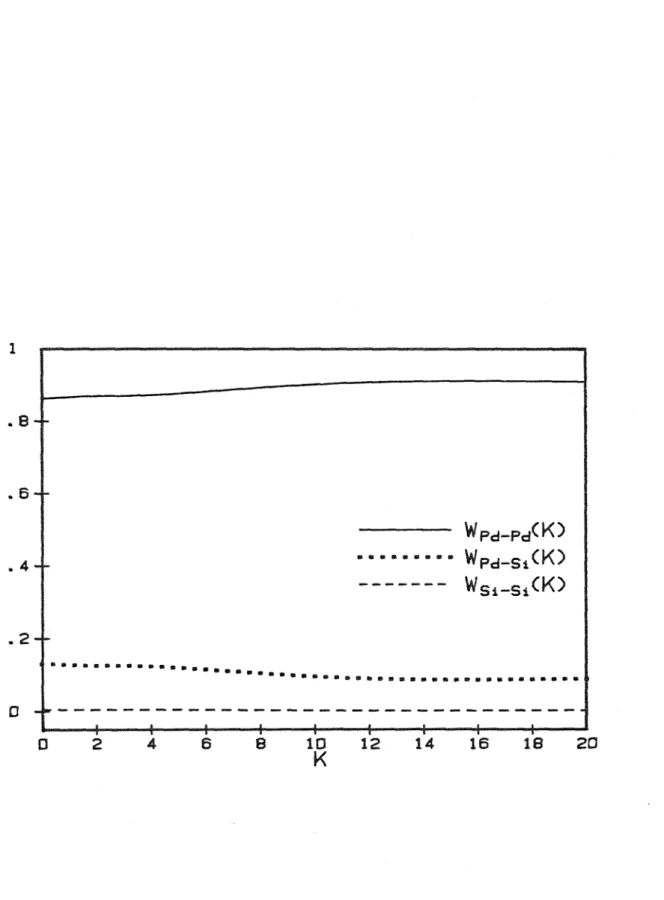
PdociS i20
Reduced radial distribution functions, G(r), for Pd80s;20. metallic glass and liquid Pd calculated from the interference functions in Figure 3. The microcrystalline models are supported by the fact that many metallic glasses exhibit pronounced diffraction maxima near the Bragg peaks in the corresponding crystal compositions. Broadening of crystal Bragg reflections can occur from small crystal sizes, inhomogeneous strains, and stacking faults. l 5). The film deposited on vitreous silica is microcrystalline while the film deposited on beryllium, which is a better thermal conductor, is not.
Somewhat more successful models for the structure of metallic glasses are based on the Bernal picture of dense random packing of hard spheres (DRPHS), a model first proposed for the structure of noble gas liquids. 24-25 ) The original investigations of Bernal and his students involved collecting steel ball bearings in rubber bladders, which were then agitated to optimize the packing. The distribution function g(r) = p(r)/Po for this model in the form of a histogram is shown in figure (6) along with a similar model by Scott and Kilgour( 28 ) using only 1000 balls. The reduced radial distribution function G(r) = 4~r (p(r) - Po) for the Bernal-Finney model is plotted in Fig. (7) with that obtained by Cargill (22) for amorphous Ni.
Hard-sphere configurations that cause a split in the second maximum of G(r) were. In the DRPHS model, there are maxima at 1.73 and 1.99 hard sphere diameters, corresponding to the opposite vertices of two tetrahedra that share a face and three that are nearly collinear.
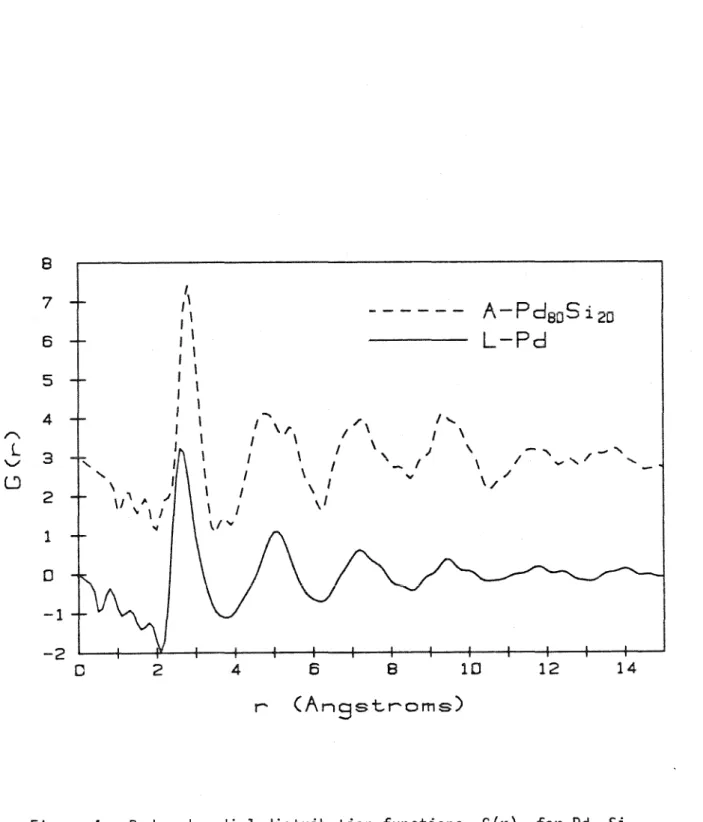
The packing fractions and atomic densities for the DRPHS models are 10 to 20% lower than for amorphous metals. Experimentally measured bandpass function of the focusing LiF monochromator tuned to Mo Kα radiation. An average of the densities measured for each of three or four foils was taken for each composition.
Ic is the intensity of inelastic or Compton-modified radiation, which must be multiplied by. The features decay quite quickly with increasing K, and by the width of the primary diffraction band. Figures (16) and (17) show i(K) and G(r) obtained for each of the four W-Ru-based metallic glasses studied here.
The existing differences between the reduced radial distribution functions of the four refractory transition metal-based glassy alloys are likely due to structural differences in the transition metal matrix, as the metalloid contributions to scattering are quite small. From Figure (17), it therefore appears that the structure of TM-M metallic glass strongly depends on the size and electronegativity of the metalloid components. The positions of the first four maxima in p(r) are given in Table (II) together with the corrected widths of the primary bands.
The position of the primary maximum in the density function corresponds to the nearest neighbor distance. The relative positions of the peaks of the second and third maxima are larger in the model than in the metallic glass and correspond to the configurations commonly found in Bernal pseudonuclei. Using the approximation introduced in equation (3) allows G(r) to be expressed as a linear combination of pair density functions, P·.(r).
In the next order of approximation, only the nMM contributions are neglected (a good approximation) and the further assumption is made that the W-Ru-B, W-R~-B-Si and W-Ru-P metallic glasses are isostructural based on the similarity in their reduced radial distribution functions. The pair density functions for the refractory transition metal–metalloid glasses investigated here demonstrate the occurrence of atomic spacings and coordination number occurring for distorted icosahedrons. The average coordination of transition metals is between 11 and 12 with about 2 of the neighbors being metalloid atoms.
Table (I) shows that the maximum scattering contribution of M-M pairs (M = Al, Ga) for the studied La1 -x x M alloys is about 3% of the total scattering (for La. In fact, the sharpness of the primary maximum of GLa-M(r) and the proximity of the nearest of La-M neighbors indicates a fairly well-defined La-M bond length in metallic glasses. Also, the atomic density of La3Al calculated from the lattice parameter is 0.03028 atoms /A3, almost the same as that of metallic glasses.
The short-range order of the La1_x(Al-Ga-Au)x metal lattices is quite different from that of the more typical amorphous TM-M alloys based on distorted icosahedral clusters.
